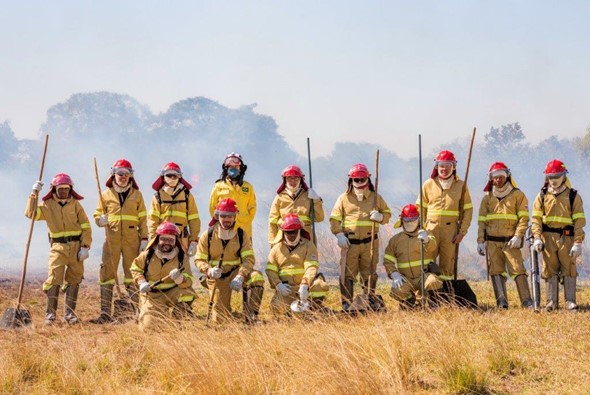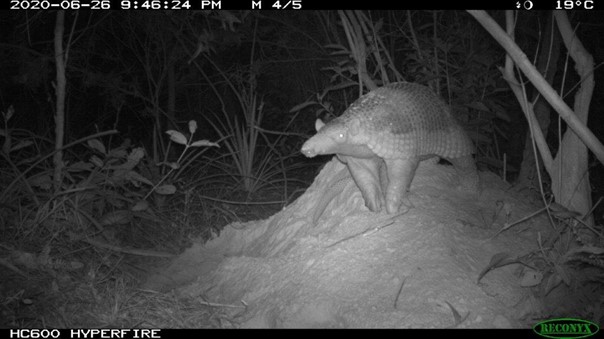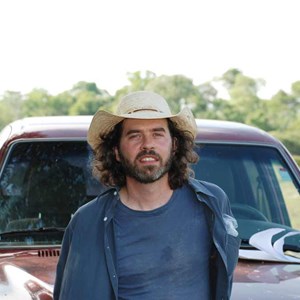A GIANT update
11/05/2022 in Conservation
Our charity has worked with Arnaud and his team at the Wildlife Conservation Institute (ICAS) in Brazil for over a decade to safeguard endangered giant armadillos, giant anteaters and their threatened habitat. This team have discovered nearly everything that is currently known about giant armadillos and have made incredible strides in making habitats and roads safer for giant anteaters. With each discovery we are better equipped to protect them from extinction.
PROJECT UPDATE: Anteaters and Highways
The news often tells us deforestation is at a record high in the Amazon, but doesn’t explain that actually every single Brazilian biome is being affected by habitat loss, not just the famous rainforest. All of ICAS’ study sites are suffering - fires and deforestation in the Pantanal wetland, land conversion to plant soy or eucalyptus in the Cerrado scrubland, widespread encroachment of the Rio Doce State Park’s forests. Arnaud’s latest update from Brazil shows us how important it is that we keep working to protect wildlife and wild places around the world. In the face of huge challenges, thanks to you, we are able to make a difference.
The scale of habitat destruction we are currently witnessing here in Brazil is unlike anything I’ve seen in my 20 years in the country. It is incredibly frustrating, not to mention heart breaking, that we have never had so much information about the impact habitat loss causes, yet so little is being done to stop it. The theme of habitat loss is addressed in all our environmental education programs, at both rural and urban schools. It is important to mention we are always sensitive to the fact that agriculture and cattle ranching are the main economic drivers of our state and try to stress positive examples and sustainable development. Our goal is to collaborate, never to blame.
Huge investment in infrastructure and increasing road connectivity has continued across some of the most fragile areas within our study sites. We are currently monitoring two major highways and 29 giant anteaters, seven of which have lost most of their home ranges. The team are working to re-capture the giant anteaters in our long-term study site on the BR-267, a major highway in Matto Grosso do Sul, and re-fit their collars. By understanding how these new highways change how anteaters use their habitat and their dispersal, we can make more effective decisions to protect them. Roadkill rates on the BR-262 continue to be unacceptably high, with truck traffic increasing because the River Paraguay has dried up and with it, the old barge transportation routes.

However, we continue to be encouraged by the attitude of the secretary of infrastructure in Mato Grosso do Sul. They have asked us to recommend mitigation measures to avoid vehicles hitting animals like giant anteaters on new highways, which is a huge step forward in our mission to turn Mato Grosso do Sul into a model for mitigation measures of wildlife vehicle collisions. We are also helping the authorities that deliver the licensing for highways, and improving their understanding of what recommendations to make around wildlife vehicle collisions. This close collaboration with authorities really gives me hope. Some of our recommendations have already been put to use on highways in the Bonito region in the south of the state. We’ve worked with our partners from Bonito Nao Atropela (a group of NGOs) to place fences in strategic areas along highways indicated as importnat by the models, field visits and topography. These fences are already saving both animal and human lives.

Despite the huge environmental challenges and difficulties imposed by the pandemic, our conservation projects are having a positive impact on biodiversity and wildlife conservation.
It is our collective strength that enables us to do the work we do.
PROJECT UPDATE: The Giant Armadillo Conservation Project
As 2021 drew to a close, it rained in the world’s largest wetland, Brazil’s Pantanal, for the first time in months. After facing the worst drought in 100 years, with even cattle dying despite artificial water holes, the hope is that is continues to rain a lot. The number of wildfires in 2021 was still much higher than the 10-year average, but the ‘positive’ news is there was a 50% reduction in fires compared to 2020.
Last year, despite the drought and heat, our expeditions to the Pantanal were really productive and the giant armadillos we monitor there are doing well. We were surprised to find giant armadillos Bianca and her daughter Sara sharing a burrow! Sara is over three years old, so it's amazing to witness how she continues to bond with her mother. Usually, they are on separate sides of Bianca´s home range, but Bianca has been traveling great expanses and could be changing her home range due to habitat disturbances on the southern border of her area, where forest is being converted to pasture. If she had not been fitted with a GPS collar we would have lost her, but we now have vital information on how adult giant armadillos like Bianca move across their increasingly fragmented landscape.
Our recently established community fire brigade managed to prevent a wildfire after satellite imagery detected unusual heat in the landscape. Landowners were called upon and they managed to put the fire out before additional support arrived. This is everything we hoped for when we set up the firefighting scheme and, with 95% of the Pantanal privately owned, doors are now open for conversations with the community so we can seek more solutions and ways to protect this precious place together.

This year, the theme of community engagement is just as important. We plan to work with local communities, government authorities and Suzanno (the biggest cellulose company in the State) to protect giant armadillos in the Cerrado scrubland of Mato Grosso do Sul. We’ll continue to push for designated protected areas, but we need to make sure that our giant armadillos are also recognised though private initiatives.

Some exciting news is the capture of a new juvenile giant armadillo, Lee. Through sheer persistence and a bit of luck, field researchers Gabriel and Danilo were able to find the burrow where Lee was sleeping. Lee will help us to continue our study on giant armadillo reproduction and dispersal as we continue monitoring the area, hoping to catch sight of his mom Avelina.
The Rio Doce State Park in Brazil’s Atlantic Forest holds the last population of giant armadillos in that biome and park boundaries are beginning to be encroached upon by settlements. In December we organised a workshop with other local conservation projects to help park managers safeguard this area. It is the first-time teams working on harpy eagles, jaguars, woolly monkeys, threatened songbirds and giant armadillos have come together and was so successful we’ll be repeating it every year.
All the best from Brazil,
Arnaud & Team
We would like to thank the players of People’s Postcode Lottery for their generous support which has helped this project.

Featured Articles

An update from the Budongo Forest
19/04/2024 in Conservation

Edinburgh Zoo named best zoo in Scotland
15/04/2024 in Edinburgh Zoo


























Follow EZ